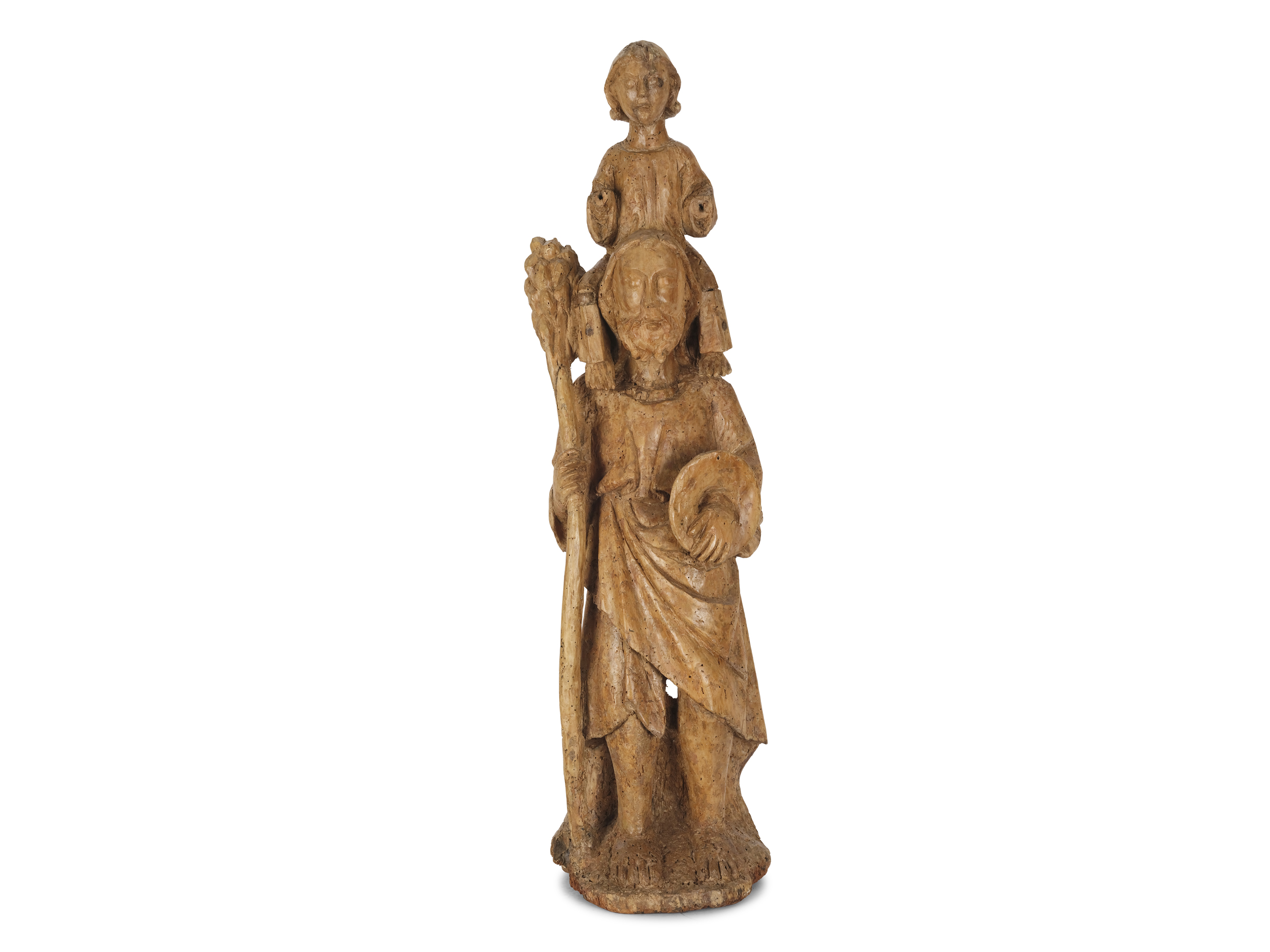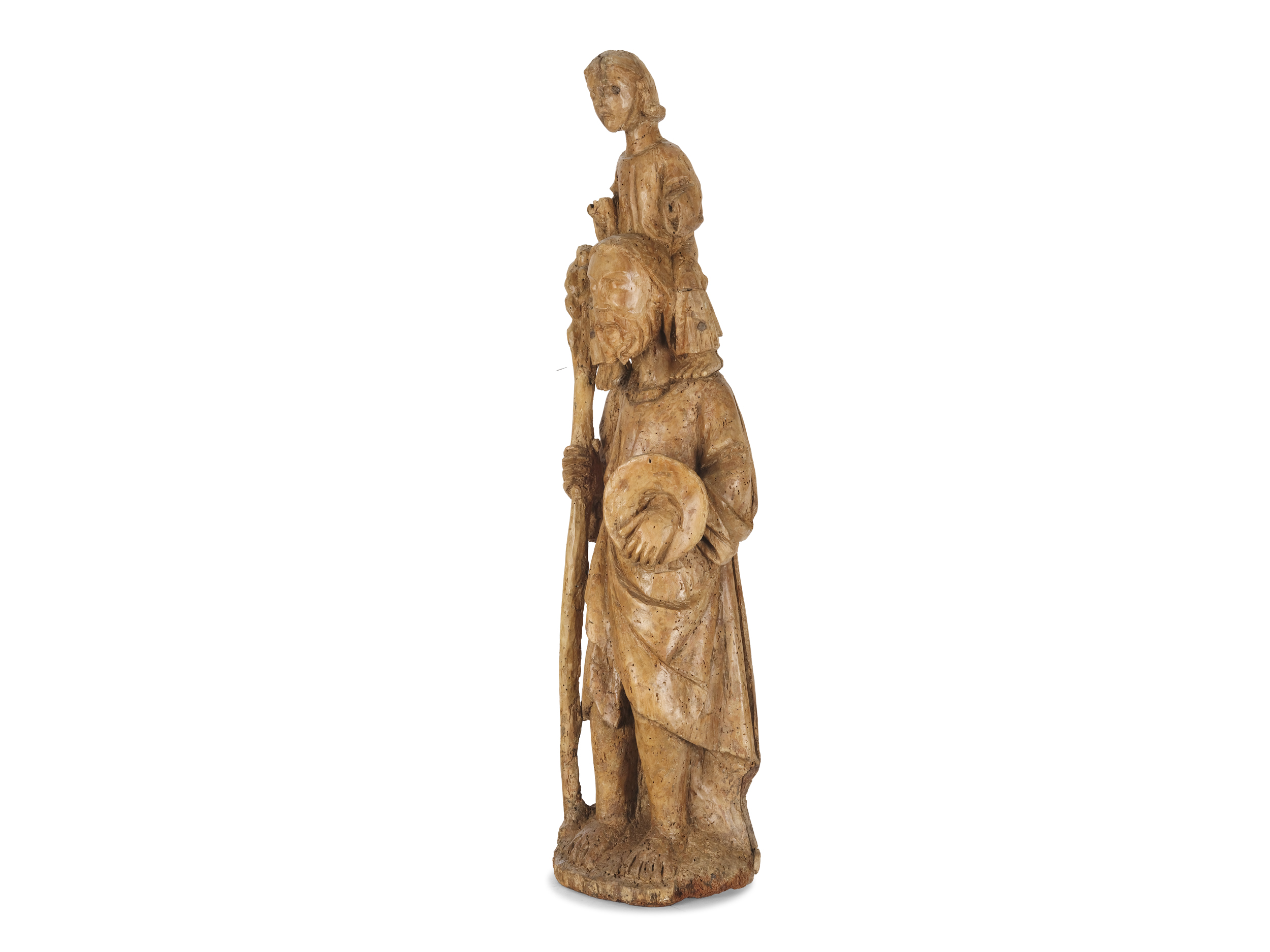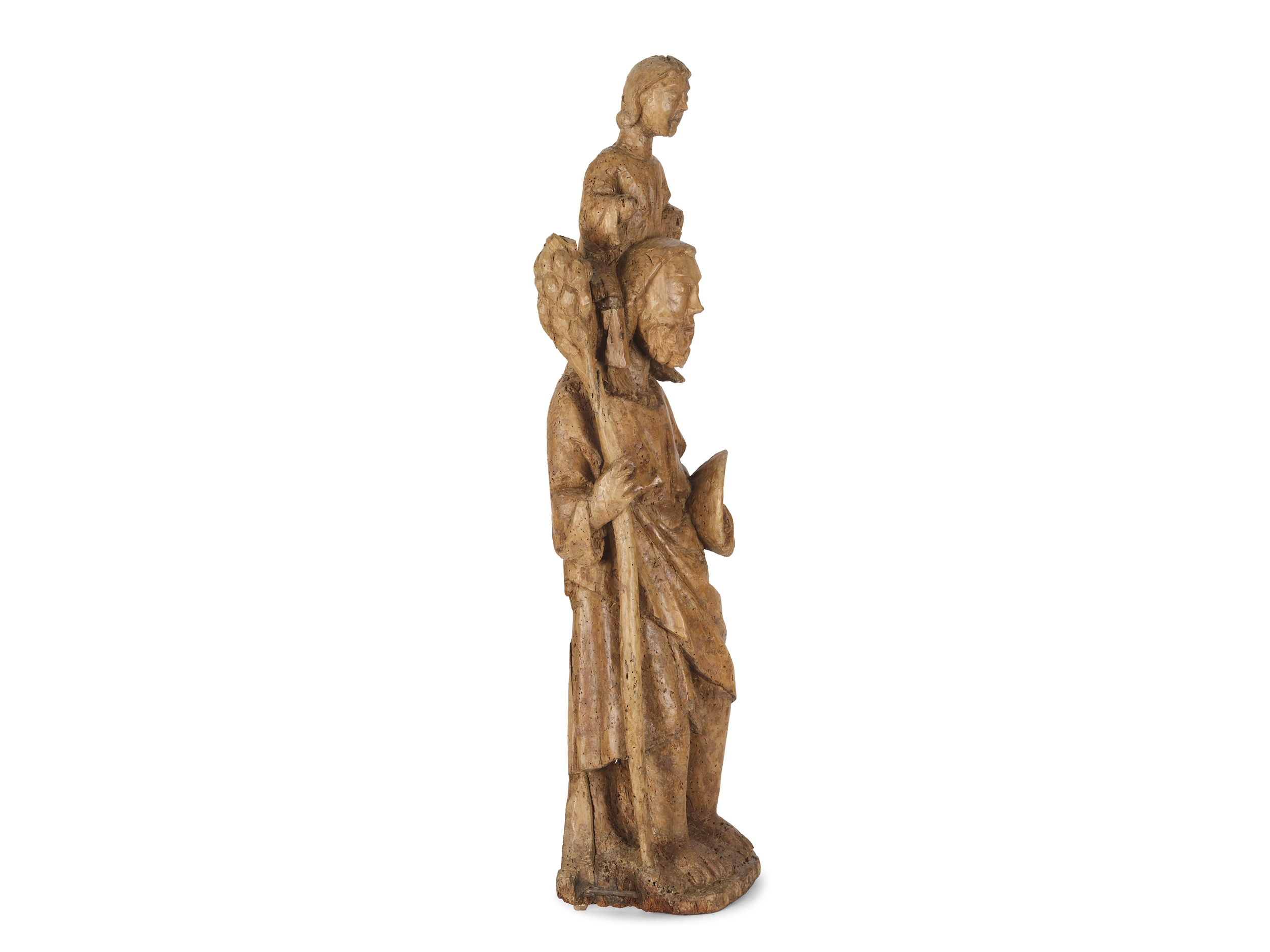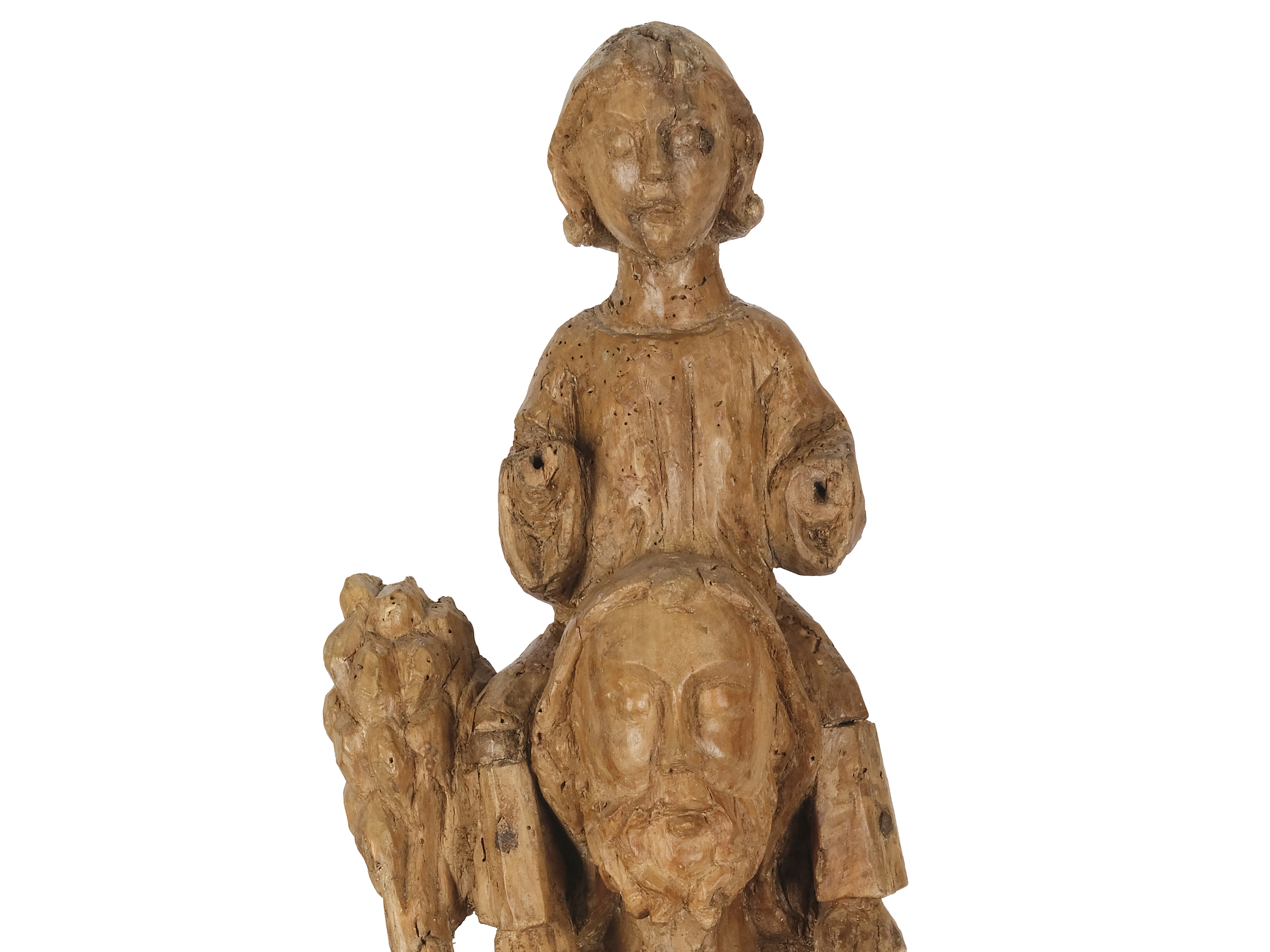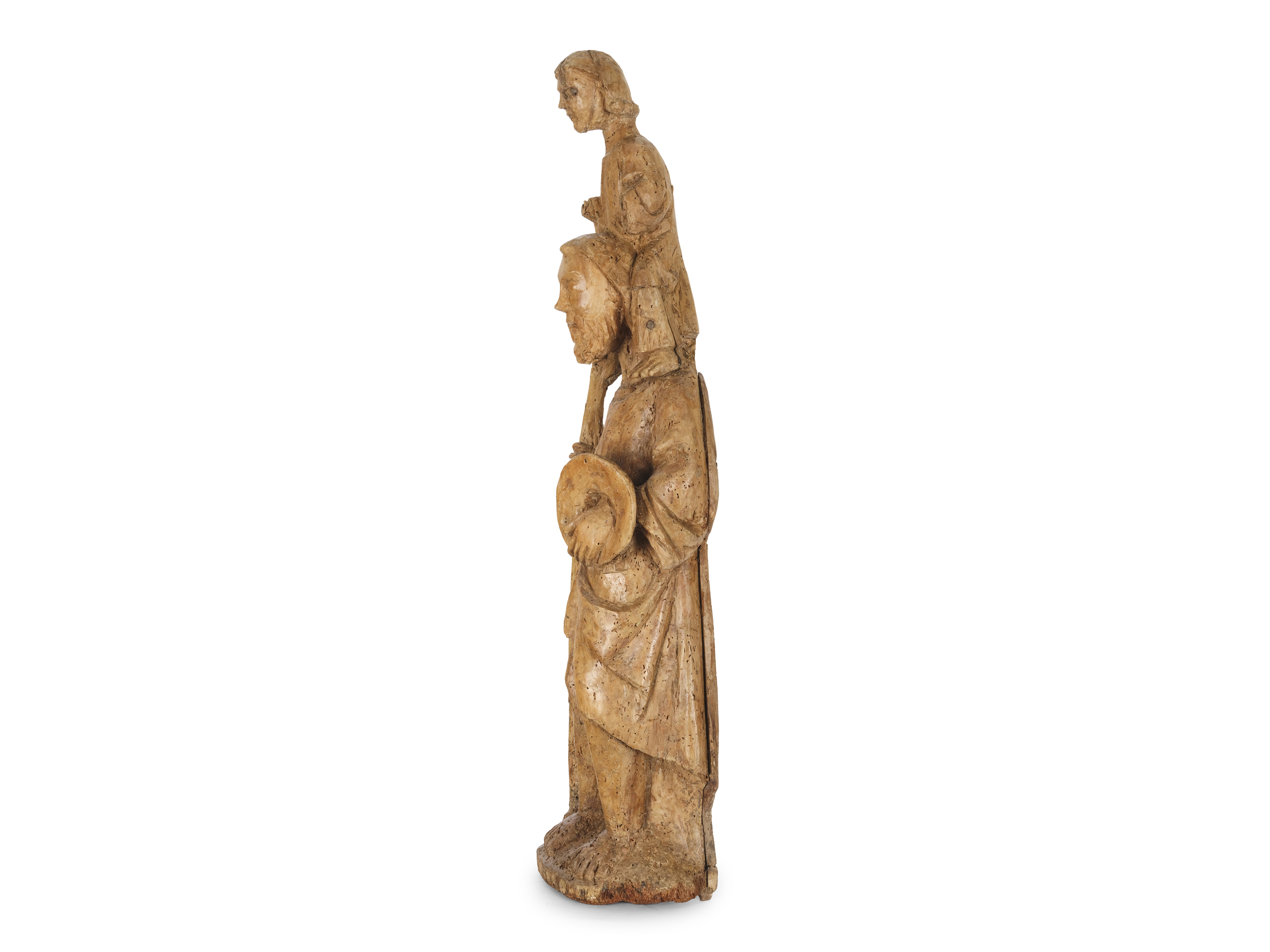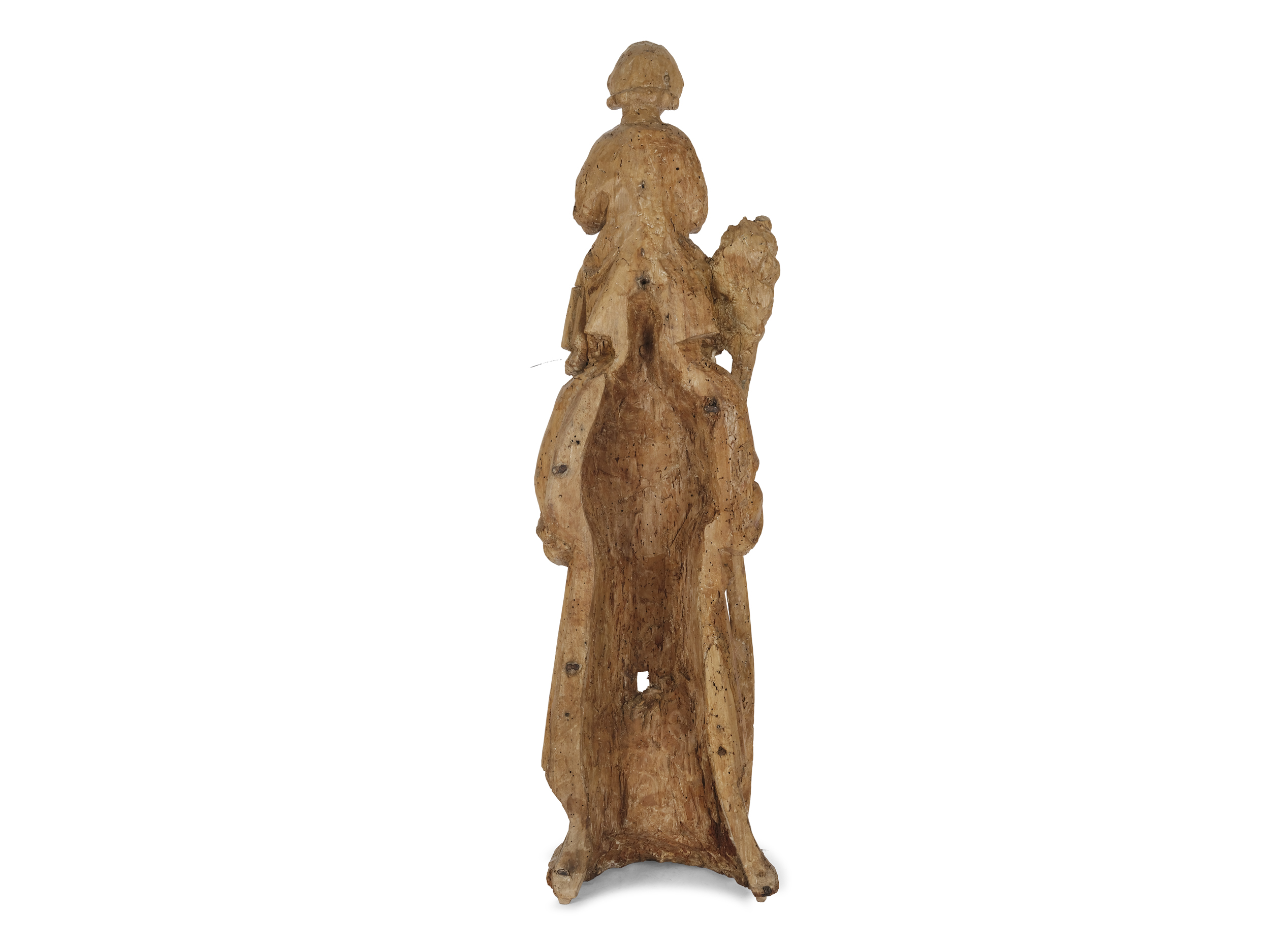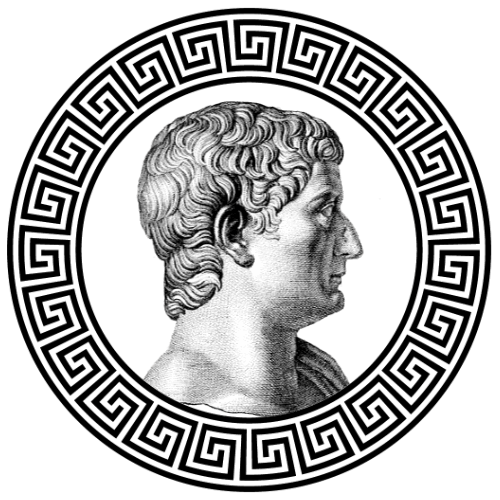Saint Christopher
14th Tiberius Auction
Saint Christopher
Starting price:
€ 6.000
- USD: 6.282 $
- GBP: 4.946 £
Estimated price: € 12.000 / 24.000
| from | to | bid increment |
|---|---|---|
| 0 € | 99 € | 5 € |
| 100 € | 199 € | 10 € |
| 200 € | 399 € | 20 € |
| 400 € | 999 € | 50 € |
| 1.000 € | 1.999 € | 100 € |
| 2.000 € | 3.999 € | 200 € |
| 4.000 € | 9.999 € | 500 € |
| 10.000 € | 19.999 € | 1.000 € |
| 20.000 € | 39.999 € | 2.000 € |
| 40.000 € | ∞ | 5.000 € |
Saint Christopher
Spain
c. 1200
Carved limewood
Height 92 cm
This museum figure of St. Christopher is from the late Romanesque or early Gothic period. The towering, strongly verticalized sculpture shows the standing Christophorus with the infant Jesus on his shoulders. In his right hand, the saint carries a staff that resembles a thin trunk with a tree crown, and in his left hand he holds the hat of a traveler.
There are many legends surrounding St. Christopher. The first depictions of St. Christopher were created in the Alpine region in the second half of the 12th century. However, the actual legend of St. Christopher did not appear until the 13th century in the Legenda Aurea. Christophorus was commissioned by a hermit to carry people on his back across a dangerous river. One night, he heard the voice of a child calling three times. As he carried the child across the river, his burden became heavier and heavier and the water began to swell. He was almost afraid of drowning because he thought that the whole world was on his shoulders. The child finally dipped him under the water and baptized him, whereupon Christopher recognized him as his Lord, Jesus Christ. In another legend from the southern Alpine region, Christopher was a pilgrim saint and, among other things, the patron saint of travelers and sailors as well as a protector against plague and storms.
This sculpture is probably one of the earliest surviving depictions of St. Christopher. In a phenomenal state of preservation for the age of the figure, even remnants of the old polychromy have been preserved. The characteristically Romanesque concept of symmetry in the posture is particularly evident in the straight rigidity of the child. In this early period, there is still no interaction between the saint and the Christ child; both are looking straight ahead. This representative type shows itself to the viewer in explicit frontality. Symmetry is also evident in the details, such as the child’s hair cut into a pageboy head and the man’s curls of beard twisted into volutes. Only the attributes and the tunic break the strict symmetry. The cane, which resembles a tree, not only emphasizes the figure’s height, but also the gigantic nature of Christophorus, who is even typified as a giant in the legends. The ring-like pilgrim’s hat, through which the saint reaches, has an extremely tactile, but also narrative quality and identifies Christopher as a traveler. The tunic is still reminiscent of Roman garments due to the belting, the bulging folds on the upper body and the drapery running diagonally downwards.
This type has hardly survived from early times, but was passed on in later frescoes and altarpieces. For example, a similar depiction can be found in the Tour Ferrande in Pernes-les-Fontaines, France, from the 12th century with frescoes from the 13th century. The popularity of this form of representation is also reflected in the surviving altarpieces from 14th century Spain, such as the altarpiece by the Master of Soriguerola (Museu Nacional d’Art de Catalunya, Barcelona, inv. no. 004370-000) or the altarpiece by an unknown Spanish master of the Franco-Gothic Castilian style (Museo del Prado, Madrid, inv. no. P003150). While these comparative examples already show the dialogue between Christophorus and the Child touching the foot of Jesus, which was later included in the iconography, the last painting depicts a similar ring-shaped pilgrim’s hat.
Literature:
Bernhard Rupprecht, Romanesque Sculpture in France, Munich 1975.
Willibald Sauerländer, Die Skulptur des Mittelalters, Berlin 1963.
R. Toman and A. Bednorz, Romanesque. Architecture – Sculpture – Painting, Cologne 2004.


